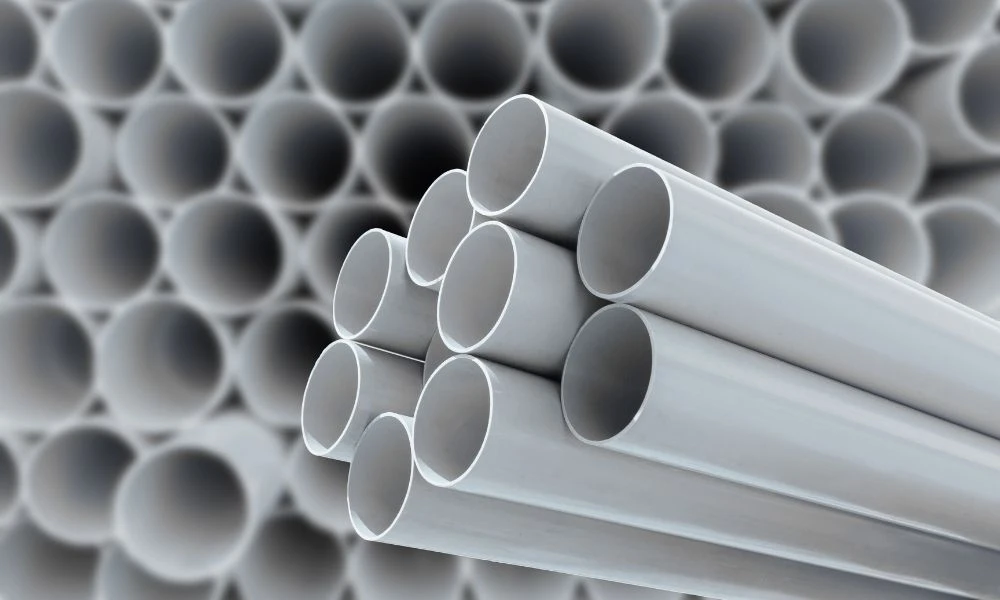1. What is PVC?
PVC, or polyvinyl chloride, is a synthetic plastic polymer. It’s one of the most widely used plastic materials globally due to its versatility and cost-effectiveness. ASTM PVC Pipe are used in a variety of applications, including plumbing, drainage, and electrical conduits.
2. Types of PVC Pipes
2.1 Schedule 40 PVC
ASTM Schedule 40 PVC pipes are the most common type. They are suitable for a range of applications, including residential plumbing and irrigation. These pipes have a moderate wall thickness, making them strong yet lightweight.
2.2 Schedule 80 PVC
ASTM Schedule 80 PVC pipes have thicker walls than Schedule 40 pipes, providing greater strength and durability. They are typically used in industrial applications or in situations where higher pressure is expected.
2.3 PVC Drainage Pipe
These pipes are specifically designed for drainage applications. They are often used for carrying wastewater and stormwater away from homes and businesses. PVC drainage pipes have different diameters and are usually installed with a slight slope to ensure proper flow.
3. Advantages of PVC Pipes
3.1 Cost-Effectiveness
One of the primary reasons ASTM PVC pipes are popular is their affordability. They are significantly less expensive than metal pipes, making them a cost-effective choice for many projects.
3.2 Durability
PVC pipes are designed to last. They can withstand pressure and are less likely to break or crack compared to other materials. Their lifespan can extend for decades with proper installation.
3.3 Resistance to Corrosion
Unlike metal pipes, PVC pipes do not corrode, rust, or degrade over time. This makes them ideal for carrying both freshwater and wastewater.
3.4 Lightweight and Easy to Handle
ASTM PVC pipes are lightweight, making them easy to transport and install. This can save both time and labor costs during construction or plumbing projects.

4. Applications of PVC Pipes
ASTM PVC pipes have a wide range of applications, including:
- Residential plumbing: Used for water supply lines and drainage systems.
- Irrigation: Commonly used in agricultural and landscaping irrigation systems.
- Electrical conduits: Protecting electrical wiring in residential and commercial settings.
- Sewage systems: Used in drainage and waste systems due to their corrosion resistance.
5. How to Install PVC Pipes
Installing ASTM PVC pipes is relatively straightforward:
- Measure and Cut: Measure the lengths needed and use a pipe cutter or saw to cut the pipes.
- Deburr the Edges: Remove any rough edges to ensure a good seal.
- Apply Primer and Cement: Use PVC primer and cement on the ends of the pipes and fittings for a secure bond.
- Connect the Pipes: Push the pieces together and hold for a few seconds.
- Let it Cure: Allow the joints to cure for the recommended time before using the system.
6. Common Concerns About PVC Pipes
While PVC pipes are popular, some concerns do exist:
- Chemical Leaching: There are concerns about chemicals leaching from PVC into drinking water, especially in hot water applications. However, ASTM PVC pipes are generally considered safe for cold water systems.
- Brittleness in Cold Temperatures: PVC can become brittle in extremely cold temperatures, so it’s important to consider insulation in colder climates.
- Environmental Impact: PVC is a plastic, and concerns have been raised about its environmental impact during production and disposal.
7. Conclusion
ASTM PVC Pipe are an essential component in modern plumbing and construction. Their cost-effectiveness, durability, and versatility make them a popular choice for a wide range of applications. Whether you’re a homeowner tackling a DIY project or a contractor on a large-scale job, understanding PVC pipes can help you make informed decisions for your plumbing needs.
FAQs
- Can PVC pipes be used for hot water?
- PVC is not recommended for hot water applications. Instead, CPVC (chlorinated polyvinyl chloride) is better suited for hot water.
- How long do PVC pipes last?
- With proper installation and care, PVC pipes can last over 50 years.
- Are PVC pipes recyclable?
- Yes, PVC pipes can be recycled, but the availability of recycling facilities may vary by location.
- Do PVC pipes require special tools for installation?
- Basic tools like a pipe cutter and measuring tape are usually sufficient for PVC pipe installation.
- Can PVC pipes be painted?
- Yes, but you need to use a paint that is suitable for plastic surfaces to ensure proper adhesion.


















